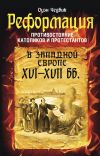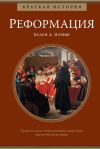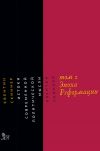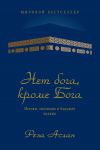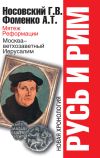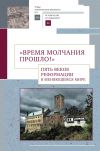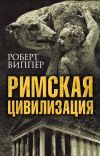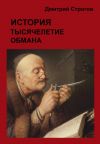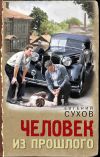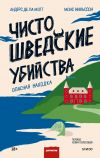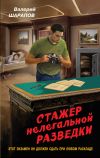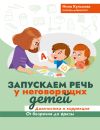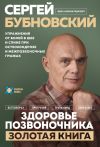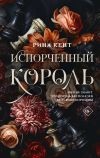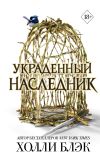Текст книги "Реформация. Полная история протестантизма"

Автор книги: Диармайд Маккалох
Жанр: Религиоведение, Религия
Возрастные ограничения: +18
сообщить о неприемлемом содержимом
Текущая страница: 74 (всего у книги 76 страниц)
44. G. Henningsen, The Witches’ Advocate: Basque witchcraft and the Spanish Inquisition (1609–1614) (Reno, 1980), с. 22. О вере в ведьм в Нидерландах, см.: W. de Blécourt, ‘On the continuation of witchcraft’, in Barry, Hester and Roberts (eds), Witchcraft in Early Modern Europe, с. 335–352.
45. Chadwick, Early Reformation, с. 408–409; о Харденберге см. гл. 7; Clark, Thinking with Demons, с. 198–208.
46. R. B. Evenhuis, Ook dat was Amsterdam, III: De kerk der hervorming in de tweede helft van der seventiede eeuw: nabloei en inzinking (Baarn, 1971), Ch. 6, цитируется в обзоре: C. R. Boxer, JEH 25 (1974), 323–326.
47. Примеры: J. Wormald, ‘The witches, the devil and the King’, in T. Brotherstone and D. Ditchburn (eds), Freedom and Authority: Scotland c.1050 – c. 1650 (Tuckwell, 2000), с. 165–180 [170].
48. E. J. Cowan, ‘The darker vision of the Scottish Renaissance: The Devil and Francis Stewart’, in I. B. Cowan and D. Shaw (eds), The Renaissance and Reformation in Scotland: essays in honour of Gordon Donaldson (Edinburgh, 1983), с. 125–140.
49. В том, что Яков проявлял столь явный интерес к ведьмам, выражено сомнение в кн.: Wormald, ‘The witches, the devil and the King’; решительное возражение: J. Goodare, ‘The Scottish witchcraft panic of 1597’, in J. Goodare (ed.), The Scottish Witchhunt in Context (Edinburgh, 2002), с. 51–72. Роль Дании в перемене настроений Якова, на которой прежде делался заметный акцент, подвергнута сомнению в публикации: P. Maxwell-Stuart, ‘The fear of the King is death: James VI and the witches of East Lothian’, Northern Scotland 18 (1998), 209–225 [212–213]. Основные источники представлены в кн.: L. Normand and G. Roberts (eds), Witchcraft in Early Modern Scotland (Exeter, 2000).
50. J. Sharpe, The bewitching of Anne Gunter: a horrible and true story of football, witchcraft, murder and the king of England (London, 1999), особ. с. 175–189. См. также: M. MacDonald (ed.), Witchcraft and Hysteria in Elizabethan London: Edward Jorden and the Mary Glover case (London, 1991), вступление, особ. с. xlix – l.
51. За это предположение я в долгу перед Малкольмом Гэскиллом.
52. C. Larner, Enemies of God: the witch-hunt in Scotland (London, 1981), особ. с. 63, 107. О том, как подобные волнения, связанные с политикой, проявлялись в преследовании скотоложцев, см.: P. G. Maxwell-Stuart, ‘“Wilde, filthie, execrabill, destestabill and unnatural sin”: bestiality in early modern Scotland’, in T. Betteridge (ed.), Sodomy in Early Modern Europe (Manchester, 2002), с. 82–93.
53. Behringer, ‘Witchcraft studies in Austria, Germany and Switzerland’, с. 86–88.
54. Ibid., с. 88–89.
55. H. Kamen, The Spanish Inquisition: an historical revision (London, 1997), с. 269–276; Henningsen, Witches’ Advocate, особ. с. 387–389.
14. Смерть, жизнь и дисциплина
1. Достойный обзор: C. Marsh, ‘“Departing well and Christianly”: will-making and popular religion in early modern England’, in E. J. Carlson (ed.), Religion and the English People 1500–1640 (16th Century Essays and Studies 45, 1998), 201–243; пример использования завещаний и их преамбул, возможно, слишком схематичный: C. Litzenberger, ‘Local responses to religious changes: evidence from Gloucestershire wills’, ibid., 245–270.
2. MacCulloch, Cranmer, с. 508–510.
3. C. Koslofsky, The Reformation of the Dead: Death and Ritual in Early Modern Germany, 1450–1700 (Basingstoke, 2000), с. 41–77, 87. О Шотландии: Todd, Protestantism in Scotland, с. 340, о Новой Англии: Bonomi, Under the Cope of Heaven, с. 69.
4. Koslofsky, Reformation of the Dead, с. 89–90, 93–95.
5. Ibid., с. 41–77, 87; R. Houlbrooke, Death, Religion and the Family in England 1480–1750 (Oxford, 1998), с. 272.
6. J. Ayre (ed.), The Works of Thomas Becon (3 vols, PS, 1843–1844); о сомнениях в Швейцарии: Gordon and Marshall (eds), Place of the Dead, introduction, с. 13n; о Франции: L. J. Taylor, ‘Funeral sermons and orations as religious propaganda in 16th century France’, ibid., с. 224–239; об Англии: Houlbrooke, Death, Religion and the Family in England, Ch. 10.
7. Murdock, Calvinism on the Frontier, с. 211–212.
8. Houlbrooke, Death, Religion and the Family in England, с. 287–289; D. Levine and K. Wrightson, The Making of an Industrial Society: Whickham 1560–1765 (Oxford, 1991), с. 292–294, 341–343.
9. Один пример – надгробная плита на могиле сэра Джона Ньютона, умершего в 1568 году в Ист-Харптри, Сомерсет. Ее разрушили в XIX веке и бесцеремонно пустили на восстановление церковного крыльца. Еще одна, которую примерно в 1590 году поставили на могиле сэра Хамфри и леди Редклифф, остается in situ в Элстоу, Бедфордшир.
10. Todd, Protestantism in Scotland, с. 333–341.
11. Достойные рассуждения и несколько примеров народного скептицизма: N. Caciola, ‘Spirits seeking bodies: death, possession and communal memory in the Middle Ages’, in Gordon and Marshall (eds), Place of the Dead, с. 66–86; сравните также: C. S. Watkins, ‘Sin, penance and purgatory in the Anglo-Norman realm: the evidence of visions and ghost stories’, PP 175 (May 2002), 3–33.
12. Koslofsky, Reformation of the Dead, с. 48; о Чистилище: ibid., с. 34–39.
13. Пример из Бернтайленда, Файф, см.: Todd, Protestantism in Scotland, илл. 22 (здесь представлена как илл. 19b).
14. H. Mayr-Harting, Perceptions of Angels in History (Oxford, 1998). Полезное рассуждение: B. Gordon, ‘Malevolent ghosts and ministering angels: apparitions and pastoral care in the Swiss Reformation’, in Gordon and Marshall (eds), Place of the Dead, с. 87–109.
15. R. W. Scribner, ‘Ritual and popular religion in Catholic Germany at the time of the Reformation’, JEH 35 (1984), 47–77 [76–77].
16. D. Cressy, Birth, Marriage and Death: ritual, religion and the life-cycle in Tudor and Stuart England (Oxford, 1997), гл. 6.
17. Для сравнения: B. Tolley, Pastors and Parishioners in Württemberg during the late Reformation 1581–1621 (Stanford, 1995), с. 64–72; Todd, Protestantism in Scotland, с. 183–226, 358–359; M. Todd, ‘Profane pastimes and the Reformed community: the persistence of popular festivities in early modern Scotland’, Journal of British Studies 39 (2000), 123–156 [140].
18. R. Hutton, ‘The English Reformation and the evidence of folklore’, PP 148 (Aug. 1995), 89–116, особ. с. 116.
19. A. McGrath, Reformation Thought: an introduction (3rd edn., Oxford, 1999), с. 165.
20. C. Hill, The English Bible and the seventeenth-century Revolution (London, 1993), с. 47. О Библиях реформатов: F. Higman, ‘“Without great effort and with pleasure”: sixteenth century Genevan Bibles and reading practices’, in O. O’Sullivan (ed.), The Bible as Book: the Reformation (London and New Castle DE, 2000), с. 115–122.
21. A. C. Southern, Elizabethan Recusant Prose 1559–1603 (London, 1950), с. 233.
22. Todd, Protestantism in Scotland, с. 71.
23. О норме часов, для сравнения: Todd, Protestantism in Scotland, с. 48–49; в Амстердаме: C. R. Boxer, JEH 19 (1968), 254–257 [256], цит. по: R. B. Evenhuis, Ook dat was Amsterdam: de kerk der hervorming in de gouden eeuw (2 vols, Amsterdam, 1965, 1967); in Geneva, O. Fatio and O. Labarthe (eds), Registres de la Compagnie des Pasteurs de Genève III: 1565–1574 (Geneva, 1969), с. 57.
24. Murdock, Calvinism on the Frontier, с. 162; о Лондоне: M. Morrissey, ‘Interdisciplinarity and the study of early modern sermons’, HJ 42 (1999), 1111–1123 [1112].
25. J. D. Tracy, Europe’s Reformations 1450–1650 (Lanham, 2000), с. 274.
26. Todd, Protestantism in Scotland, с. 29, 40–44, 53–54, 68–69.
27. S. Karant-Nunn, The Reformation of Ritual: an interpretation of early modern Germany (London and New York, 1997), с. 161.
28. Todd, Protestantism in Scotland, с. 76, 83, 113. В рассуждениях о Германии я очень благодарен доктору Стефану Эренпрайсу за разрешение процитировать его еще не опубликованную работу: ‘The use of catechisms: production and exchange of texts in 16th and 17th-century Europe’; его сведения о Германии взяты из работы: J. M. Reu, Quellen zur Geschichte des kirchlichen Unterrichts (9 vols, Leipzig, 1923–1935). I. Green, The Christian’s ABC: Catechisms and Catechizing in England c. 1550–1740 (Oxford, 1996), особ. илл. на с. 51.
29. Tolley, Pastors and Parishioners in Württemberg (Stanford, 1995), с. 73–76, 82–85, 116; C. Haigh, ‘Success and failure in the English Reformation’, PP 173 (Nov. 2001), 28–49 [41–48].
30. О Граце: Pörtner, Styria, с. 219; о Франции: Ehrenpreis, ‘Use of catechisms’. Об Испании, см. выше, гл. 10, с. 482–483.
31. A. Walsham, ‘“Domme preachers”? Post-Reformation English Catholicism and the culture of print’, PP 168 (Aug. 2000), 72–123, особ. с. 104–105; B. S. Gregory, ‘The “true and zealouse service of God”: Robert Parsons, Edmund Bunny, and The first booke of the Christian Exercise’, JEH 45 (1994), 238–268. Кроме того, Банни создал версию книги Фомы Кемпийского «О подражании Христу», которую могли без опасений читать протестанты.
32. K. Konkola, ‘“People of the Book”: the production of theological texts in early modern England’, Papers of the Bibliographical Society of America 94 (2000), 5–34.
33. P. Benedict, The Faith and Fortune of France’s Huguenots, 1600–1685 (Aldeshot, 2001), с. 154.
34. Цит. по: K. H. Marcus, ‘Hymnody and hymnals in Basel, 1526–1606’, SCJ 32 (2001), 730.
35. M. Rössler, Bibliographie der deutschen Liedpredigt (Nieuwkoop, 1976).
36. K. L. Parker, ‘Richard Greenham’s “Spiritual Physicke”: the comfort of afflicted consciences in Elizabethan pastoral care’, in Lualdi and Thayer (eds), Penitence, с. 71–83 [78].
37. Marcus, ‘Hymnody in Basel’, 735–736.
38. Murdock, Calvinism on the Frontier, с. 18, 167–168.
39. G. R. Potter and M. Greengrass, John Calvin: Documents of Modern History (London, 1983), с. 90.
40. G. Strauss, ‘The dilemma of popular history’, PP 132 (Aug. 1991), 130–149 [133].
41. Для сравнения: P. Burke, Popular Culture in Early Modern Europe (London, 1978), гл. 8, ‘The Triumph of Lent’.
42. MacCulloch, Later Reformation, с. 136–137; C. Marsh et al., Songs of the Seventeenth Century (Belfast, 1995), с. 4, 35, 85; J. N. King, English Reformation Literature: the Tudor origins of the Protestant tradition (Princeton, 1982), с. 211, 277–279.
43. R. Hutton, Stations of the Sun: a History of the ritual year in Britain (Oxford, 1996), с. 155.
44. M. Maher, ‘Confession and consolation: the Society of Jesus and its promotion of the general confession’, in Lualdi and Thayer (eds), Penitence, с. 184–200, особ. с. 185–186, 194–195; см. выше: гл. 9, с. 474–475.
45. G. Bray (ed.), Tudor Church Reform: the Henrician Canons of 1535 and the Reformatio Legum Ecclesiasticarum (Church of England Record Society 8, 2000).
46. E. Christiansen, обзор публикации: H. Bergan, Skriftemål og skirftestol: Skriftemålet i den norske kirke fra reformasjonstiden til idag (Oslo, 1982), JEH 34 (1983), 483. Подробное обсуждение обычаев немецких лютеран: M. J. Haemig and R. Rittgers in Lualdi and Thayer (eds), Penitence, с. 30–70.
47. C. H. Parker, ‘The moral agency and moral autonomy of church folk in the Dutch Reformed Church of Delft’, JEH 48 (1997), 44–70 [48].
48. A. Duke, ‘The ambivalent face of Calvinism in the Netherlands 1561–1618’, in M. Prestwich (ed.), International Calvinism 1541–1715 (Oxford, 1985), с. 109–134 [128–129].
49. Todd, Protestantism in Scotland, с. 96–97.
50. J. Pollmann, ‘Off the record: problems in the quantification of Calvinist Church discipline’, SCJ 33 (2002), 423–437. О Франции, см.: R. A. Mentzer, ‘Notions of sin and penitence within the French Reformed community’, in Lualdi and Thayer (eds), Penitence, 84–100 [87, 92].
51. D. Postles, ‘Penance and the market-place: a Reformation dialogue with the medieval church (c. 1250 – c. 1600)’, JEH 54 (2003), 422–440. О последующих событиях: Todd, Protestantism in Scotland, гл. 3.
52. Murdock, Calvinism on the Frontier, с. 210.
53. Todd, Protestantism in Scotland, с. 135, 321.
54. Ibid., с. 170.
55. K. M. Brown, ‘In search of the godly magistrate in Reformation Scotland’, JEH 40 (1989), 553–581 [567]. Об отношении Церкви Шотландии к родительским наставлениям в браке см. ниже, гл. 15, с. 687–688.
56. T. Scott, Regional Identity and Economic Change: the Upper Rhine, 1450–1660 (Oxford, 1998), с. 226–228, 234–235.
57. A. Ryrie, ‘Counting sheep, counting shepherds: the problem of allegiance’, in Marshall and Ryrie (eds), Beginnings of English Protestantism, с. 84–110 [102–103].
58. D. Cressy, Bonfires and Bells: National Memory and the Protestant Calendar in Elizabethan and early Stuart England (London, 1989). Todd, Protestantism in Scotland, с. 225–226.
59. Todd, Protestantism in Scotland, Ch. 2.
60. L. E. Schmidt, Holy Fairs: Scottish communions and American revivals in the early modern period (Princeton, 1989), с. 21–26.
61. M. Hill, ‘Ulster awakened: the ‘59 Revival reconsidered’, JEH 41 (1990), 443–462 [445].
62. M. J. Westerkamp, Triumph of the Laity: Scots-Irish piety and the Great Awakening 1625–1760 (Oxford, 1988), с. 15.
63. R. H. Tawney, Religion and the Rise of Capitalism (London, 1926), с. 226–227.
64. Eisenstein, Printing Revolution, с. 103.
65. Это утверждение ярче всего выражено в ряде сочинений Джона Босси; ср. особ.: J. Bossy, Christianity in the West 1400–1700 (Oxford, 1985), с. 140–152, 167–171. Склонность к такой аргументации можно также усмотреть в классических английских «ревизионистских» работах, посвященных Реформации, например: J. J. Scarisbrick, The Reformation and the English People (Oxford, 1983); E. Duffy, The Stripping of the Altars: traditional religion in England 1400–1580 (New Haven and London, 1992).
15. Любовь и секс: все по-прежнему
1. T. Taylor, The Prehistory of Sex: Four Million Years of Human Sexual Culture (London, 1996), с. 7.
2. Цит. по: J. Boswell, Christianity, Social Tolerance and Homosexuality (Chicago, 1980), с. 164.
3. H. J. Schroeder (ed.), Canons and Decrees of the Council of Trent (London, 1941), с. 182.
4. Цит. по: W. R. Naphy, Sex Crimes from Renaissance to Enlightenment (Stroud, 2002), с. 18. Для других примеров, для сравнения: Ellington, Mary, с. 168.
5. I. Maclean, ‘The notion of woman in medicine, anatomy and physiology’, in R. Hutson (ed.), Feminism and Renaissance Studies (Oxford and New York, 1999), с. 127–135.
6. P. Brown, The Body and Sexuality: Men, Women and Sexual renunciation in early Christianity (London, 1989), с. 396–447, особ. с. 416.
7. A. Fletcher, Gender, Sex and Subordination in England 1500–1800 (New Haven and London, 1995.
8. C. Fantazzi (ed.), J. L. Vives, The Education of a Christian Woman (Chicago and London, 2000), с. 232.
9. J. Kelly: ‘Did women have a Renaissance?’, reprinted from R. Bridenthal (ed.), Becoming Visible: women in European history (New York, 1977), in Hutson (ed.), Feminism and Renaissance Studies, с. 21–47.
10. M. E. Wiesner, ‘Frail, weak and helpless: women’s legal position in theory and reality’, in J. Friedman (ed.), Regnum, Religio et Ratio: essays presented to Robert Kingdon (SCES 8, 1987), 161–169; Wiesner, ‘The Holy Roman Empire: women and politics beyond liberalism, individual rights and revolutionary theory’, in H. L. Smith (ed.), Women Writers and the Early Modern British Political Tradition (Cambridge, 1998), с. 305–323.
11. J. L. Irwin (ed.), A. M. van Schurman, Whether a Christian woman should be educated and other writings from her intellectual circle (Chicago and London, 1998), особ. с. 5.
12. См. мои дальнейшие рассуждения на эту тему в публикации: D. MacCulloch, ‘Mary and the Protestant Reformers’, in R. N. Swanson (ed.), The Place of Mary in Christian History (SCH 39, 2006).
13. W. Tappolet with A. Ebneter, Das Marienlob der Reformatoren: Martin Luther, Johannes Calvin, Huldrych Zwingli, Heinrich Bullinger (Tübingen, 1962), с. 245, 280.
14. Naphy (ed.), Documents, с. 101.
15. Tappolet with Ebneter, Marienlob, с. 246.
16. P. Laslett, Family Life and Illicit Love in Earlier Generations (revised edn., Cambridge, 1980), гл. 1.
17. R. A. Houlbrooke, The English Family 1450–1700 (London and New York, 1984), с. 10, 20.
18. D. Cressy, ‘Kinship and kin interaction in early modern England’, PP 113 (Nov. 1986), 38–69 [67].
19. E. A. Wrigley and R. Schofield, The Population History of England 1541–1750 (revised edn. Cambridge, 1989), с. 255; для сравнения: E. A. Wrigley, R. S. Davies, J. E. Oeppen and R. S. Schofield, English Population History from Family Reconstitution 1580–1837 (Cambridge, 1997), с. 135.
20. R. A. Houston, The Population History of Britain and Ireland 1500–1750 (Basingstoke, 1988), с. 58–59. Для сравнения: Laslett, Family Life and Illicit Love, с. 4.
21. О конкретных примерах такой реакции в Нюрнберге во время чумы, см.: M. Beer, ‘Private correspondence in Germany in the Reformation era: a forgotten source for the history of the burgher family’, SCJ 32 (2001), 931–951.
22. Houston, Population History, с. 78–88.
23. Laslett, Family Life and Illicit Love, с. 58, 168.
24. Wrigley and Schofield, Population History, с. 443–450, 528–529.
25. Это был особый недостаток классического описания анализа такого рода: L. Stone, The Family, Sex and Marriage in England (New York, 1977). Показательное опровержение подхода Стоуна: S. Ozment, Ancestors: the loving family in old Europe (Cambridge, MA, 2001). Критика авторитетных утверждений Филиппа Арьеса о детях в Средневековье, см.: N. Orme, Medieval Children (New Haven and London, 2001), особ. с. 9.
26. Todd, Protestantism in Scotland, с. 266.
27. Houlbrooke, English Family, с. 128, 157; Stone, Family, Sex and Marriage, с. 415–422.
28. Stone, Family, Sex and Marriage, с. 282, 520, 605–607; Laslett, Family Life and Illicit Love, с. 111.
29. H. Abelove, ‘Some speculations on the history of sexual intercourse during the long eighteenth century in England’, Genders 6 (1989), 125–130; T. Hitchcock, English Sexualities, 1700–1800 (New York, 1997), гл. 3.
30. A. Machard (ed.), T. de Bèze, Juvenilia (Paris, 1879), вступление от редактора и с. 234–237, ’De sua in Candidam et Audebertum benevolentia’: ’Sic Bezae cupidus sui Audebertus…Sed postquam tamen alterum necesse est Priores tibi defero, Audeberte: Quod si Candida forte conqueratur / Quid tum? basiolo tacebit imo.’
31. N. S. Davidson, ‘Sodomy in early modern Venice’, in T. Betteridge (ed.), Sodomy in Early Modern Europe (Manchester, 2002), с. 65–81 [71–74].
32. J. Boswell, Christianity, Social Tolerance and Homosexuality: gay people in western Europe from the beginning of the Christian era to the fourteenth century (Chicago and London, 1980); J. Boswell, The Marriage of Likeness: same-sex unions in pre-modern Europe (London, 1995); M. Barber, ‘Lepers, Jews and Moslems: the plot to overthrow Christendom in 1321’, History 66 (1981), 1–17.
33. A. Bray, Homosexuality in Renaissance England (London, 1981), с. 21–22.
34. M. Laven, ‘Sex and celibacy in early modern Venice’, HJ 44 (2001), 865–888 [865].
35. M. R. Boes, ‘On trial for sodomy in early modern Germany’, in Betteridge (ed.), Sodomy, с. 27–45 [27]; M. E. Perry, ‘The “nefarious sin” in early modern Seville’, in K. Gerard and G. Hekma (eds), The Pursuit of Sodomy: male homosexuality in Renaissance and Enlightenment Europe (Binghamton, 1989), с. 67–89.
36. T. S. Betteridge, ‘The place of sodomy in the writings of John Bale and John Foxe’, in Betteridge (ed.), Sodomy, с. 11–26 [14].
37. N. Matar, Turks, Moors and Englishmen in the Age of Discovery (New York, 1999), гл. 4: об одержимости иезуитов восточной содомией, J. D. Spence, The Memory Palace of Matteo Ricci (London, 1984), гл. 7.
38. C. L. Polecritti, Preaching Peace in Renaissance Italy: Bernardino of Siena and his audience (Washington DC, 2000), с. 52–53. Для сравнения: M. J. Rocke, ‘Sodomites in fifteenth-century Tuscany: the views of Bernardino of Siena’, in K. Gerard and G. Hekma (eds), The Pursuit of Sodomy, с. 7–31.
39. Naphy, Sex Crimes, с. 128; для сравнения: Boes, ‘On trial in early modern Germany’, с. 42.
40. W. R. Naphy, ‘Sodomy in early modern Geneva: various definitions, diverse verdicts’, in Betteridge (ed.), Sodomy, с. 94–111; Naphy, Sex Crimes, с. 75–76, 120, 156.
41. Bray, Homosexuality in Renaissance England, с. 68–69. Для сравнения: Davidson, ‘Sodomy in early modern Venice’, с. 69–70; о Бернардино: Rocke, ‘Sodomites in fifteenth-century Tuscany’, с. 17–18.
42. Ср. примеры, процитированные в публикации: Boes, ‘On trial in early modern Germany’, с. 31. Редкое свидетельство из Женевы о судебном преследовании за гетеросексуальный групповой секс в 1569 году также показывает, что мужчины были частью иерархического общественного строя: Naphy, Sex Crimes, с. 149–150.
43. Bray, Homosexuality in Renaissance England, с. 52–53.
44. Betteridge (ed.), Sodomy, с. 5.
45. D. Clarke, ‘“The sovereign’s vice begets the subject’s error”: the Duke of Buckingham, “sodomy” and narratives of Edward II, 1622–1628’, in Betteridge (ed.), Sodomy, с. 46–64.
46. Betteridge, ‘Sodomy in Bale and Foxe’, с. 21.
47. T. Webster, ‘“Kiss me with kisses of his mouth”: gender inversion and Canticles in godly spirituality’, in Betteridge (ed.), Sodomy, 5, op. cit., с. 148–163. Об Иоанне Креста, см.: гл. 9.
48. L. Mott, ‘Love’s labours lost: five letters from an early seventeenth-century Portuguese sodomite’, in Gerard and Hekma (eds), Pursuit of Sodomy, с. 91–101. On Boudin, Boes, ‘On trial in early modern Germany’, с. 33.
49. R. Norton, Mother Clap’s Molly House: the gay subculture in England 1700–1830 (London, 1992); T. van der Meer, ‘The persecutions of sodomites in early eighteenth-century Amsterdam: changing perceptions of sodomy’, in Gerard and Hekma (eds), Pursuit of Sodomy, с. 263–309; Hitchcock, English Sexualities, гл. 5.
50. Naphy, Sex Crimes, с. 98–100, 106, 130, 165–170; Hitchcock, English Sexualities, гл. 4.
51. MacCulloch, Tudor Church Militant, с. 145.
16. Любовь и секс: движение вперед
1. M. R. Boes, ‘On trial for sodomy in early modern Germany’, in T. Betteridge (ed.), Sodomy in Early Modern Europe (Manchester, 2002), с. 27–45 [27]; N. S. Davidson, ‘Sodomy in early modern Venice’, in ibid., с. 65–81 [75].
2. J. Arrizabalaga, J. Henderson and R. French, The Great Pox: the French Disease in Renaissance Europe (New Haven and London, 1997), гл. 7, 8.
3. Cunningham and Grell, Four Horsemen, с. 309, 347–348.
4. M. Honigsbaum, The Fever Trail: the hunt for the cure for malaria (Basingstoke, 2001).
5. N. Orme, ‘The Reformation and the Red Light’, HT 37 (March 1987), 36–41.
6. J. S. Cummins, ‘Pox and paranoia in Renaissance Europe’, HT 38 (Aug. 1988), 28–35; S. Andreski, ‘The Syphilitic shock’, Encounter (May 1982), 7–26.
7. Bireley, Refashioning, с. 77, и для сравнения: ibid., с. 181–187.
8. S. Karant-Nunn, in Pettegree (ed.), Reformation World, с. 458.
9. W. R. Naphy, Sex Crimes from Renaissance to Enlightenment (Stroud, 2002), с. 22; S. Burghartz, Zeiten der Reinheit – Orte der Unzucht. Ehe und Sexualität in Basel während der frühen Neuzeit (Paderborn, 1999), с. 152–163, 287–288, 298; H. Kamen, The Phoenix and the Flame: Catalonia and the Counter-Reformation (New Haven and London, 1993), с. 281–287.
10. M. Ingram, Church Courts, Sex and Marriage in England, 1570–1642 (Cambridge, 1987), особ. гл. 11, 12.
11. J. Bossy, The English Catholic Community 1570–1850 (London, 1975), с. 136.
12. Ingram, Church Courts, Sex and Marriage, с. 366n.
13. Naphy, Sex Crimes, с. 39, 42.
14. Ingram, Church Courts, Sex and Marriage, с. 335; для сравнения: D. Hirst, ‘The Failure of Godly Rule in the English Republic’, PP 132 (August 1991), 33–66.
15. J. M. Ferraro, Marriage Wars in late Renaissance Venice (Oxford, 2001), с. 29, 154–160.
16. C. Villaseñor Black, ‘Love and marriage in the Spanish Empire: depictions of holy matrimony and gender discourses in the 17th century’, SCJ 32 (2001), 637–667 [663].
17. M. E. Wiesner-Hanks, Christianity and Sexuality in the Early Modern World: regulating desire, reforming practice (London and New York, 2000), с. 196.
18. Ellington, Mary; достойный общий обзор, но можно было ярче показать все более заметный контраст между севером и югом.
19. O. Hufton, ‘Altruism and reciprocity: the early Jesuits and their female patrons’, Renaissance Studies 15 (2001), 328–353, особ. с. 336, 340–341; о Лиссабоне, для сравнения: B. Telles, Chronica da Companhia de Iesu, na provincia de Portugal (2 vols, Lisbon, 1645, 1647), ii, с. 94–97.
20. Hufton, ‘Altruism and reciprocity’, 337. О женщинах, устраивавших покаянные процессии: J. D. Selwyn, ‘“Schools of mortification”: theatricality and the role of penitential practice in the Jesuits’ popular missions’, in Lualdi and Thayer (eds), Penitence, с. 201–221 [217–218].
21. O. Hufton, ‘The widow’s mite and other strategies: funding the Catholic Reformation’, TRHS 6th ser. 8 (1998), 130–172.
22. S. Evangelisti, ‘Wives, widows and brides of Christ: marriage and the convent in the historiography of early modern Italy’, HJ 43 (2000), 233–248 [241]; E. A. Lehfeldt, ‘Discipline, vocation, and patronage: Spanish religious women in a Tridentine microclimate’, SCJ 30 (1999), 1009–1029 [1009, 1022]. L’Invasion mystique (1590–1620) – так назывался второй том труда: H. Brémond, Histoire littéraire du sentiment religieux en France depuis la fin des Guerres de Religion jusqu’à nos jours (12 vols, Paris, 1916–1936).
23. J. G. Sperling, Convents and the Body Politic in Late Renaissance Venice (Chicago and London, 1999), с. 3–4.
24. P. R. Baernstein, ‘The Counter-Reformation Convent: the Angelics of San Paolo in Milan, 1535–1635’ (неопубликованные тезисы диссертации на соискание степени доктора философии, Гарвард, 1993), с. 216, цит. по: S. Broomhall, ‘“In my opinion”: Charlotte de Minut and female political discussion in print in 16th century France’, SCJ 31 (2000), 25–45 [40].
25. Hufton, ‘Altruism and reciprocity’, 345–347.
26. M. Wright, Mary Ward’s Institute: the struggle for identity (Sydney, 1997).
27. Hufton, ‘Widow’s mite’, 134–135.
28. Bireley, Refashioning, с. 40–41.
29. Мать Марию не следует путать с босоногой кармелиткой Барбарой Акари (см. гл. 10, с. 541), которая тоже взяла себе имя Марии Воплощения.
30. E. Rapley, The Dévotes: women and church in seventeenth century France (Montreal, 1990), особ. гл. 4, 5.
31. О сложной и запутанной истории этого произведения, см.: CWE, J. K. Sowards (ed.), XXV/XXVI: Literary and educational writings, (1985), с. 528–529; одна из версий текста находится там же, с. 129–145.
32. CWE, XXV/XXVI: Literary and educational writings, с. 130, 137.
33. См. его ответ Клихтову: CWE, G. Bedouelle (ed.), LXXXIII: Controversies (1998), с. 115–148; и ранний ответ критику: CWE, J. K. Sowards (ed.) LXXI: Controversies (1993), с. 85–96.
34. Содержательное общее рассмотрение церковного брака: Chadwick, Early Reformation, гл. 7.
35. H. Selderhuis, Marriage and Divorce in the Thought of Martin Bucer (Kirksville MO, 1999), с. 116–117, 121–123.
36. M. Summers (ed.), H. Kramer and J. Sprenger, Malleus Maleficarum (London, 1928), с. 44; для сравнения: гл. 13, с. 565–567.
37. Selderhuis, Marriage and Divorce in Bucer, с. 165–180.
38. Ellington, Mary, с. 184–185.
39. E. A. McKee, Katharina Schütz Zell (2 vols, Leiden, 1999), i, с. 109.
40. О Кранмере: MacCulloch, Cranmer, с. 361–362, 472; о Хупере: D. MacCulloch, ‘Worcester: a cathedral city in the Reformation’, in P. Collinson and J. Craig (eds), The Reformation in English towns, 1500–1640 (Basingstoke, 1998), с. 94–112 [106].
41. P. Collinson, The Religion of Protestants: The Church in English society 1559–1642 (Oxford, 1982), с. 142.
42. Bonomi, Under the Cope of Heaven, с. 69; Todd, Protestantism in Scotland, с. 73, 272.
43. R. Heber and C. P. Eden (eds), The Whole Works of the Right Rev. Jeremy Taylor… (12 vols, London, 1847–1854), v, с. 212, 224 (курсив автора).
44. Цит. по: R. Askew, Muskets and Altars: Jeremy Taylor and the last of the Anglicans (London, 1997), с. 57–58. Сравните аллюзию Тейлора: младенца-грека отводят от края обрыва «материнской грудью»: Works of Taylor, v, с. 216–217.
45. MacCulloch, Cranmer, с. 481.
46. Selderhuis, Marriage and Divorce in Bucer, гл. 6, с. 138–143.
47. A. Wabuda, ‘Sanctified by the believing spouse: women, men and the marital yoke in the early Reformation’, in Marshall and Ryrie (eds), Beginnings of English Protestantism, с. 111–128; Selderhuis, Marriage and Divorce in Bucer, с. 305–306.
48. E. V. Beilin (ed.), The Examinations of Anne Askew (Oxford, 1996); P. Collinson, ‘John Knox, the Church of England and the women of England’, in R. A. Mason (ed.), John Knox and the British Reformations (Aldershot, 1998), с. 74–96. О женоподобии, см. выше, гл. 15.
49. Naphy (ed.), Documents, с. 71–72. Следует указать, что история эта исходит от противника кальвинизма, Флоримона де Рамона, но он называет имя очевидца.
50. J. Christopherson, An exhortation to all menne to…beware of rebellion (London, 1554, RSTC 5207), sig. Sviiiab.
51. C. Garrett, The Marian Exiles (London, 1938). Этот эффект кажется особенно странным, когда приходится искать информацию о Екатерине, герцогине Суффолк, в статье о ее муже Ричарде Берти, сыгравшем намного менее важную роль.
52. Bossy, English Catholic Community, с. 153–158.
53. McKee, Katharina Schütz Zell, i, с. 461, 194, 209–210.
54. M. J. Haemig, ‘Elisabeth Cruciger (1500?–1535): the case of the disappearing hymn writer’, SCJ 32 (2001), 21–44.
55. Broomhall, ‘Charlotte de Minut and female political discussion’, op. cit., 28; Naphy (ed.), Documents, с. 51, 64, 103–105.
56. F. L. Rutgers (ed.), Acta van de Nederlandsche synoden der zestiende eeuw (Utrecht, 1889), с. 9–41 [26] (Cap. V no. 10): ‘Quibus locis erit etiam mulieres spectata fide ac probitate et aetate provectas ad hoc munus Apostolorum exemplo rectè ascisci posse.’
57. W. Harrison, ‘The role of women in Anabaptist thought and practice: the Hutterite experience of the 16th and 17th centuries’, SCJ 23 (1992), 49–70 [54].
58. H. Martens, ‘Women in the Hutterites’ Song Book’, in C. A. Snyder and L. A. Huebert Hecht (eds), Profiles of Anabaptist Women: Sixteenth century Reforming pioneers (Waterloo, Ontario, 1996), с. 221–243 [225], и для сравнения: M. Epp, ‘Women in the Chronicle of the Hutterian Brethren’ in ibid., с. 202–220.
Правообладателям!
Это произведение, предположительно, находится в статусе 'public domain'. Если это не так и размещение материала нарушает чьи-либо права, то сообщите нам об этом.